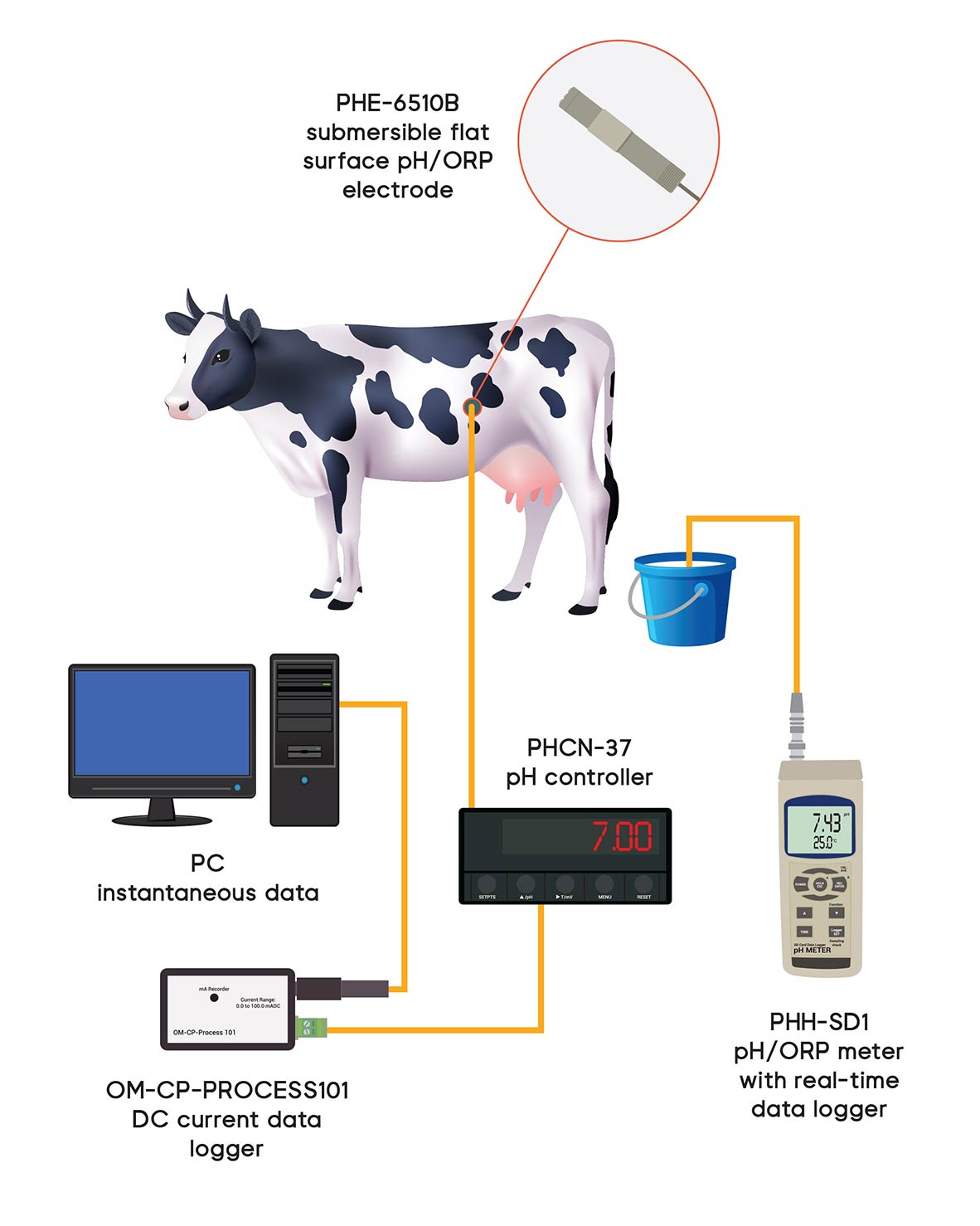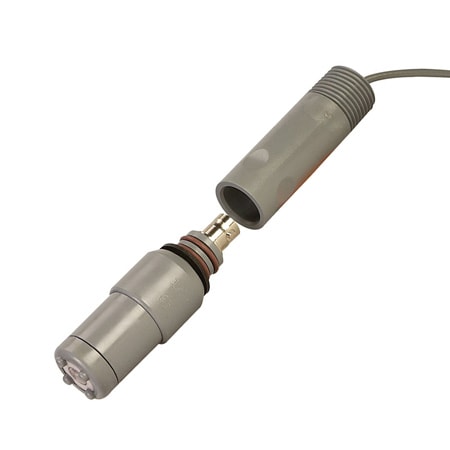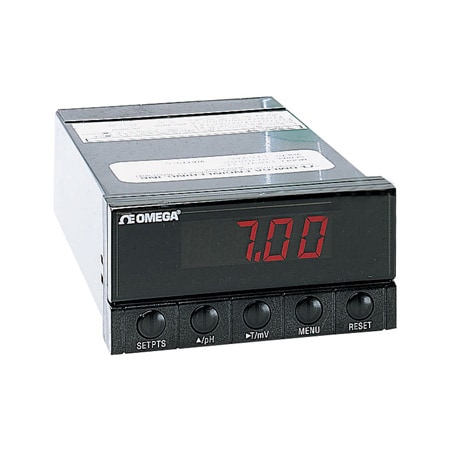Application
The pH levels in each of a ruminant’s four stomachs play an essential role in a cow’s digestive process and milk production. For example, when the rumen (the cow’s first stomach) pH level drops below 5.8, it can stunt the growth of rumen bacteria and decrease milk production. In severe cases, low rumen pH levels can cause acidosis and cattle can become ill or even die.
In this application, researchers can actively measure and monitor the pH level of a cow’s four stomachs and the pH levels of milk extracted from the cow to further their understanding of what can impact pH levels within a ruminant’s digestive system.

OMEGA products used in this application
Products
The figure above shows the schematic of the pH measuring system inserted into the ruminant’s four stomachs. The application is comprised of four products:
PHE-6510B: This flat surface submersible probe design is well suited for applications with relatively high suspended solids such as may be found in a ruminant’s digestive system. In addition, the flat sensing surface is surrounded by a porous polyethylene reference junction which minimizes fouling.
PHCN-37: This pH panel mounted controller is designed for a wide variety of monitoring applications and can be interfaced with a variety of pH electrodes. It includes automatic or manual temperature compensation of pH, two 5-amp mechanical relays and a choice of a scalable 4 to 20 mA, or 0 to 20 mA control or recording output or a 0 to 10 V output. For ease of operation all calibration and parameter setpoints are selectable through the front keypad.
OM-CP-PROCESS101: This low cost, battery-powered data logger is available in two ranges, 20 mA and ±160 mA. Its small size allows it to fit almost anywhere and data retrieval is as simple as plugging it into an available USB port. The included Windows software allows data to be exported to a text or Microsoft Excel file for further calculations.
PHH-SD-1: This handheld pH meter is easy to operate and measures pH or mV using standard electrodes with BNC connectors. It also incorporates a real-time SD card data logger to allow data to be downloaded from the SD card directly into an Excel spreadsheet.
How it Works
This application requires the skilled care of a veterinarian as placing the pH probes will require sedation of the cow and an incision in each stomach to place the probes. Excluding the surgical procedure, below are the steps for this application:
- Place pH probes in each stomach with the cables exiting the incision.
- Attach cables from the pH probes to the pH controller, which will provide a visual display of the pH levels.
- Connect the data logger to the controller.
- Connect the data logger to a PC using a USB cord.
- Using the data logger software, export data to an Excel file for further analysis.
- Use a handheld pH meter to measure the pH levels in milk extracted from the cow.
Results
Researchers were able to accurately measure the pH levels of the cow’s stomach over a period of time as well as the pH levels of the milk extracted from the cow.
Pro Tip
When monitoring pH levels, temperature can impact the accuracy of the pH readings. If temperature fluctuates or is higher than ambient temperatures, you will need to use a temperature compensated pH electrode.

